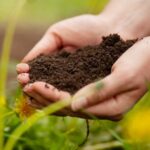Sustainability isn’t just a buzzword anymore; it’s a necessity, especially in the realm of agriculture. With the world’s population ever-growing and environmental concerns looming large, it’s imperative for farmers to adopt practices that not only ensure high yields but also safeguard the planet for future generations. Sustainable farming practices aim to strike a balance between meeting present needs without compromising the ability of future generations to meet their own needs. Here are the top five sustainable farming practices that farmers can implement to promote environmental stewardship and long-term viability.
1. Crop Rotation
Crop rotation is a time-tested agricultural technique that involves planting different crops in the same area in sequential seasons or years. This practice offers numerous benefits, both agronomic and environmental. By rotating crops, farmers can disrupt pest and disease cycles, reducing the need for chemical pesticides and herbicides. Additionally, diverse crop rotations help improve soil fertility and structure by varying nutrient demands and root structures, thereby enhancing overall soil health. Rotating crops also mitigates soil erosion, as different crops have different root systems that hold soil in place more effectively.
For example, a farmer might alternate between planting legumes, such as soybeans or peas, which fix nitrogen in the soil, with grains like corn or wheat, which have high nutrient demands. This rotation not only improves soil health but also increases crop resilience to pests and diseases, ultimately leading to more sustainable and productive farming systems.
2. Conservation Tillage
Traditionally, agriculture relied heavily on intensive tillage practices to prepare the soil for planting. However, excessive tillage can lead to soil erosion, loss of soil organic matter, and disruption of soil structure. Conservation tillage techniques aim to minimize soil disturbance while still achieving optimal seedbed conditions for crop growth.
One common conservation tillage practice is no-till farming, where farmers refrain from plowing the soil and instead plant seeds directly into the previous crop residue. By leaving crop residues on the soil surface, farmers can protect the soil from erosion, retain moisture, and promote the sequestration of carbon in the soil. Reduced tillage also preserves soil structure and biodiversity, fostering a healthier ecosystem underground.
3. Cover Cropping
Cover cropping involves planting non-cash crops, such as legumes, grasses, or cover crop mixes, during fallow periods or alongside primary crops. These cover crops provide a multitude of benefits to the soil and surrounding environment. They help prevent soil erosion by covering the ground and protecting it from wind and water erosion. Cover crops also suppress weed growth, reducing the need for synthetic herbicides, and improve soil fertility by adding organic matter and fixing nitrogen from the atmosphere.
Moreover, cover crops enhance biodiversity by providing habitat and food sources for beneficial insects and microorganisms. They also promote water infiltration and retention, reducing runoff and improving overall water quality. By incorporating cover crops into their farming practices, growers can boost soil health, increase resilience to climate change, and foster more sustainable agricultural systems.
4. Integrated Pest Management (IPM)
Integrated Pest Management (IPM) is a holistic approach to pest control that emphasizes prevention, monitoring, and control methods that minimize risks to human health and the environment. Instead of relying solely on chemical pesticides, IPM integrates a combination of cultural, biological, and mechanical strategies to manage pest populations effectively.
These strategies may include crop rotation, habitat manipulation, biological control agents (such as predatory insects or parasitic wasps), and the use of resistant crop varieties. By employing diverse tactics tailored to specific pests and local conditions, farmers can reduce reliance on synthetic pesticides, mitigate the development of pesticide resistance, and minimize negative impacts on non-target organisms and ecosystems.
5. Agroforestry
Agroforestry is a sustainable land management system that integrates trees and shrubs into agricultural landscapes, combining the benefits of agriculture and forestry. This practice offers numerous environmental, economic, and social benefits. Trees and shrubs provide shade, windbreaks, and erosion control, protecting crops and soil from adverse weather conditions.
Furthermore, agroforestry systems enhance biodiversity by creating diverse habitats for wildlife and beneficial insects. They also improve soil fertility and structure by cycling nutrients, increasing organic matter, and promoting microbial activity. Agroforestry can also diversify farm income streams by providing additional products such as fruits, nuts, timber, and medicinal plants.
In conclusion, sustainable farming practices are essential for safeguarding the environment, enhancing resilience to climate change, and ensuring the long-term viability of agricultural systems. By adopting techniques such as crop rotation, conservation tillage, cover cropping, integrated pest management, and agroforestry, farmers can promote soil health, biodiversity, and ecosystem services while maintaining productivity and profitability. As stewards of the land, it is incumbent upon farmers to embrace sustainability as a guiding principle in their operations, for the benefit of present and future generations.
Click here for more info: Friend of The Earth

